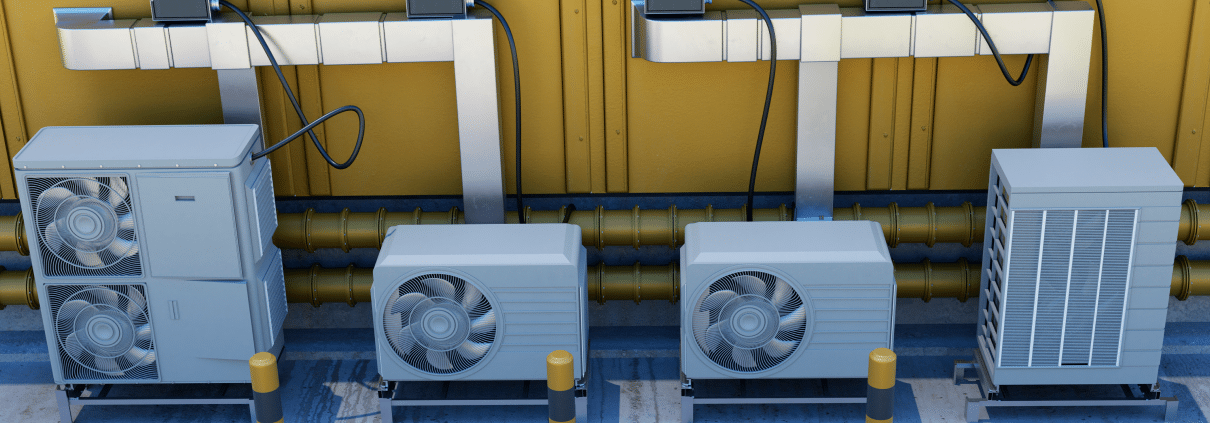Heat pump operation: How does it work?
/in blog /by FrigotecUSRWhether it's an air-to-air, air-to-water or ground-to-water geothermal heat pump... by drawing its source from the environment, the heat pump (PAC) is a device designed to bring clean, renewable and economical energy into the home. As energy consumption is one of the main items of expenditure in a home, finding a way to reduce bills has become a daily battle for every household.
Heat pumps were developed to provide economical, high-performance heating and domestic hot water. But it also offers a host of advantages, not least of which is that it can be used for both heating and air conditioning, depending on the unit.
But in concrete terms, how does a heat pump work? What's the difference between an air-to-air heat pump, an air-to-water heat pump and a geothermal heat pump? In this article, find out all there is to know about the heat pump and how it works.
Feel free to browse our blog posts to find out more about air conditioning operation too.
Heat pump type and operation
Generally speaking, the heat pump works on the principle of capturing external heat (or energy) from the air, water or ground, then transforming it to a temperature high enough to heat the home. This source can be ground, air or groundwater. It then uses thermodynamics to convert mechanical energy into thermal energy. To do this, the heat pump contains a refrigerant that alternates between liquid and gas. The heat pump circulates the refrigerant in a closed circuit.
The heat pump consists of an evaporator, a compressor, a condenser, or heat exchanger, and an expansion valve. The fluid, or refrigerant gas, circulates continuously through this circuit. The fluid's change of state as it passes through the various components of the unit produces heat.
Air-to-air heat pump operation (aerothermal)
The air-to-air heat pump, or aerothermal heat pump, draws energy from the outside or inside air, heats it and injects it directly into the room to be heated. However, air-to-air heat pumps cannot be used to heat domestic hot water. However, many air-to-air heat pumps are reversible, with a function that enables them to draw heat from inside your home and discharge it outside. This means your equipment can also be used as an air conditioner in summer.
How an air-to-water (aerothermal) heat pump works
The air-to-water heat pump is the second type of aerothermal heat pump. It extracts heat from the outside air. However, it transfers them to the home via a hydraulic circuit. This may be a radiator or underfloor heating system (or, more rarely, a fan coil water heating system). These types of heat pump can also supply domestic hot water.
The geothermal heat pump and how it works
A ground-to-water geothermal heat pump draws heat from the ground to heat water for heating and sanitary purposes. The geothermal heat pump system is fairly complex, and transfers heat to the home via radiators or an underfloor heating system.
The hydrothermal heat pump and principle
The hydrothermal (water-to-water) heat pump operates on the same principle as a geothermal heat pump, but draws its calories from a shallow water table (groundwater).
Good to know about the heat pump and its operating principle
Whatever the heat pump model and however it works, a heat pump significantly reduces fossil fuel consumption compared with an old-fashioned gas, oil or coal-fired boiler. Using a free, natural resource saves energy. On the other hand, in very harsh winters, a low-temperature heat pump may not be sufficient, so auxiliary heating may be required.
Nevertheless, before any heat pump installation, whether for an air-to-water heat pump installation, air-to-air or water-to-water heat pump the professional in charge of your project carries out an energy diagnostic and assesses the thermal needs of your home. In addition, there are many criteria involved in choosing a heat pump and its optimum operation. This depends on your home's insulation and desired comfort. In fact, if your home is very poorly insulated, it may be necessary to carry out insulation work beforehand. In fact, a heat pump will not be sufficiently effective in countering heat loss due to poor insulation.
Finally, when it comes to a heat pump's electricity consumption, you need to refer to its Coefficient of Performance (COP). The COP of a heat pump is usually greater than 3. In other words, for every 3 kWh of thermal energy produced, the system consumes just 1 kWh. By way of comparison, an electric heating system using resistance heaters has a COP of 1.


